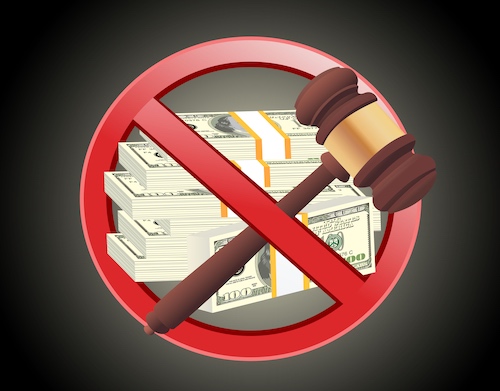Federal Circuit Clarifies Important IPR Estoppel Issues | Jones Day
Under 35 U.S.C. § 315(e)(2), a patent challenger in an inter partes review (IPR) that reaches a final written decision is estopped from arguing in a district court or the ITC that the challenged patent is invalid based on grounds that were “raised or reasonably could have been raised” in the IPR. In Ironburg Inventions Ltd. v. Valve Corp., the Federal Circuit clarified two aspects of IPR estoppel, holding that (1) an IPR petition reasonably could have raised any grounds that “a skilled searcher conducting a diligent search reasonably could have been expected to discover,” and (2) the patent owner bears the burden of proving that petitioner estoppel should apply. Nos. 21-2296, -2297, and 22-1070 (Fed. Cir. Apr. 3, 2023). District courts had reached different conclusions on these issues, and so the Ironburg decision provides helpful clarity.
Patent owner Ironburg Inventions Ltd. (“Ironburg”) sued Valve Corporation (“Valve”) in district court for infringing U.S. Patent No. 8,641,525, which is directed to a handheld controller for a video game console. In response, Valve filed an IPR petition, which was partially instituted as was permitted prior to the Supreme Court’s decision in SAS Institute Inc. v. Iancu, 138 S. Ct. 1348 (2018). Valve had the opportunity following the SAS decision to seek a remand to have the Board to consider the non-instituted grounds, but Valve chose not to.
Prior to trial in the district court, Ironburg moved for an order applying IPR estoppel to (i) the IPR grounds that the Board declined to institute (the “Non-Instituted Grounds”), and (ii) invalidity grounds that Valve newly discovered after filing its IPR petition (the “Non-Petitioned Grounds”). The district court granted the estoppel motion in full. On appeal, Valve argued that it could not have reasonably raised either the Non-Instituted Grounds or the Non-Petitioned Grounds in its IPR petition.
The Federal Circuit affirmed the district court’s estoppel determination with respect to the Non-Instituted Grounds. The Court noted that the “Non-Instituted Grounds were explicitly contained in the petition,” and Valve admittedly chose not to seek a SAS remand to have the Board consider these grounds. Valve’s “choice to leave unremedied the Board’s mistake does not shield it from estoppel … [with respect to grounds] it included in its IPR petition.” Slip op. at 31 (quoting Click-to-Call Techs. LP v. Ingenio, Inc., 45 F.4th 1363, 1370 (Fed. Cir. 2022)).
The Federal Circuit next addressed the Non-Petitioned Grounds that Valve discovered after filing its petition. For these grounds, the Court vacated and remanded for further proceedings “[b]ecause the district court improperly placed the burden of proof on [petitioner] Valve, to show that it could not ‘reasonably . . . have raised’ the Non-Petitioned Grounds in its petition, when instead the burden of proof rests with [patent owner] Ironburg to prove that these were grounds Valve ‘reasonably could have raised’ during the IPR.” Slip. op. at 32. The Court held that this burden rests on the patent owner because it is “the party asserting and seeking to benefit from the affirmative defense of IPR estoppel.” Id. at 35.
The Court further noted that it had “not fully addressed the standards by which a determination is to be made as to what invalidity grounds not presented in a petition are estopped pursuant to § 315(e)(2).” Id. at 32. The Court recognized that several district courts have applied the “skilled searcher” standard and found that this standard is consistent with the statutory language, which requires estoppel only as to grounds that “reasonably” could have been raised—and not grounds that would only result from extraordinary measures (e.g., “a scorched-earth search”). Id. at 32-34. Accordingly, the Court held that “§ 315(e)(2) estops a petitioner as to invalidity grounds a skilled searcher conducting a diligent search reasonably could have been expected to discover, as these are grounds that the petitioner ‘reasonably could have raised’ in its petition.” Id. at 33.
Takeaways
While the Ironburg decision provides needed clarity on certain estoppel issues, it also raises new ones that will be the subject of litigation. For example, who is a “skilled searcher,” and what constitutes a “diligent search”? Will parties need to engage patent-searching experts who can opine on what a skilled searcher “reasonably could have been expected to discover”? The decision may also push more petitioners towards engaging professional search firms, as opposed to filing petitions based on prior-art references that they have on hand.






